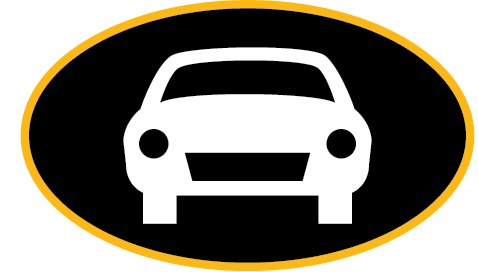

What Is The Residential Permit (RPP) Parking Program?
A program was established in 1979 by City Council (Article 31, Section 156) to create restricted parking areas to help secure available parking for residents and encourage visitors to find alternative parking/transportation options.
What Are The Goals Of The RPP Program?
1. To protect residents against unreasonable burdens in gaining access to their residence
2. To reduce hazardous traffic conditions
3. To promote clean air
4. To preserve the quality of life in the general community
What Qualifies A Neighborhood To Be Eligible For RPP?
1. Non-residents create a parking problem in a neighborhood.
2. At least 10 (nearly) contiguous block faces (each side of a block) must participate.
3. The Community Association for the neighborhood must be supportive of the effort.
How Do I Contact My Community Association?
View the list of community associations and contact information kept by the Baltimore City Department of Planning.
How Can I Determine Which Community Association To Contact?
What Types Of Decisions Does My Community Need To Make?
The details of each RPP reflect the desires of the community including:
What Percentage Of Households Is Needed To Implement RPP In My Neighborhood?
Sixty percent (60%) of eligible households are required to sign a petition approving of RPP in the area. The total number of eligible households is determined by PABC using the information provided by the community, Maryland State Tax, and Assessment Records, Baltimore City Criss-Cross Directory, and the Baltimore Board of Municipal Zoning and Appeals.
What Documents Do Residents Need To Qualify For An RPP Permit?
Exceptions are made for students, temporary workers, active duty military, and dual residents. Please visit the required documents page for more information.
What If My Vehicle Is Not Registered In My Name?
You must present a notarized letter from the registered owner giving their permission for you to drive the car. The letter must include the vehicle make, model, color, tag #, and VIN. The letter must not be older than 6 months.
If you share the same last name as the vehicle owner, a notarized letter is not required.
I Am Living In Baltimore Temporarily. Can I Participate In The RPP Program?
Yes, but additional documentation is required. Contact the Maryland Department of Transportation's Motor Vehicle Administration or call 800-950-1MVA (1682) to apply for a Non-Resident Permit. Students and members of the military must provide a current ID. Temporary workers (an assignment of 1 year or less) must provide a letter from their employer confirming the employment duration.
Can I Apply For Or Renew My RPP Permit Online?
How Many Permits Are Allowed For Each Household?
Up to four registered vehicles per household can be permitted.
I Have A Parking Pad On My Property. Can I Still Get An RPP Permit?
If you have more vehicles than existing off-street parking spaces, RPP permits can be issued for the vehicles that need to park on-street.
How Many Visitors’ Passes Can I Get?
Each Community Association chooses the number of visitors’ passes per household (0, 1, 2, or 4). Areas 28 and 45 are not eligible for visitor permits.
How Much Does Permit Parking Cost?
All Residential Parking Permits have a cost associated with them, including both Parking Permit Decals, virtual permits, and Visitor Passes. Please contact the RPP Office to learn more (443-573-2800).